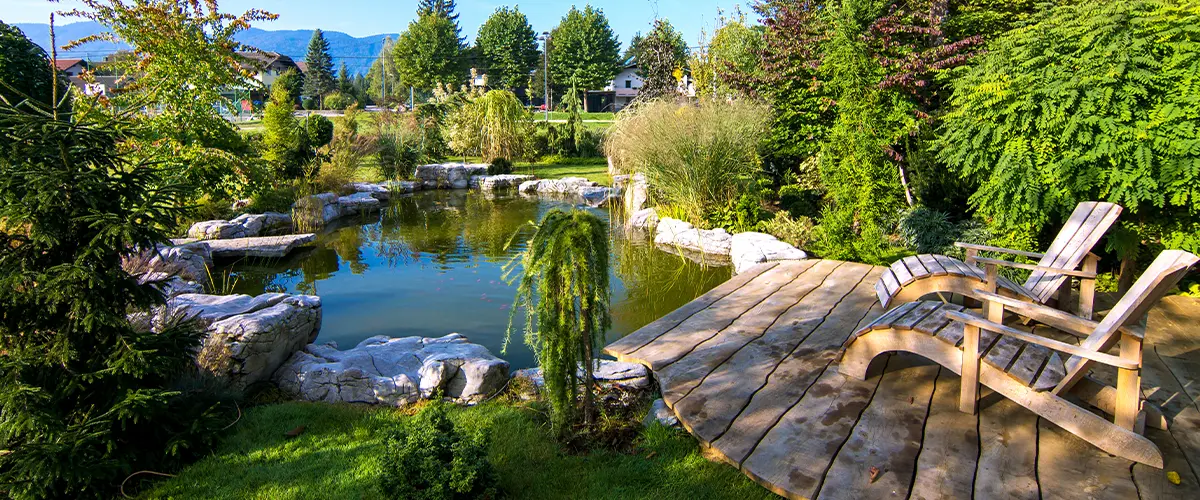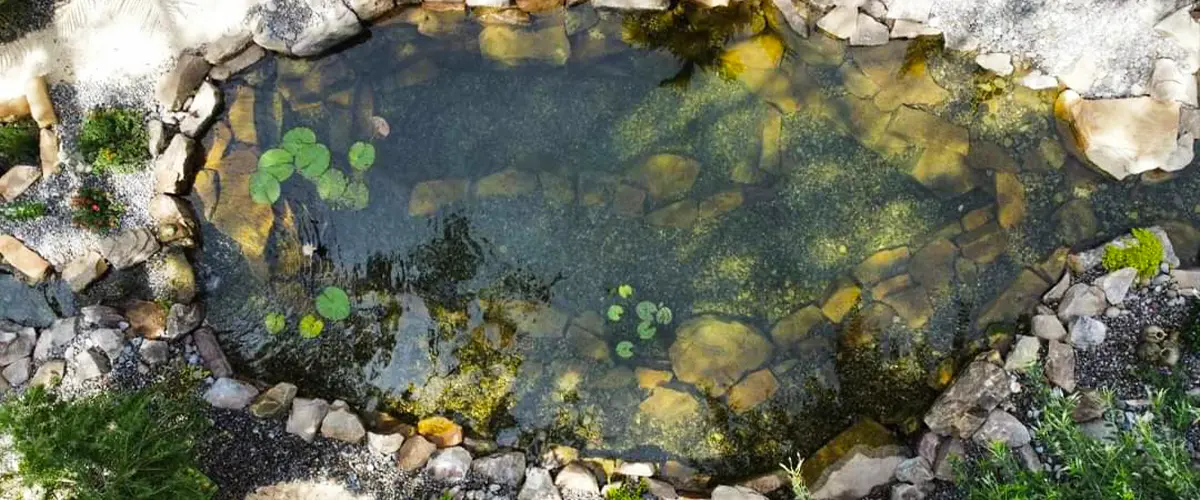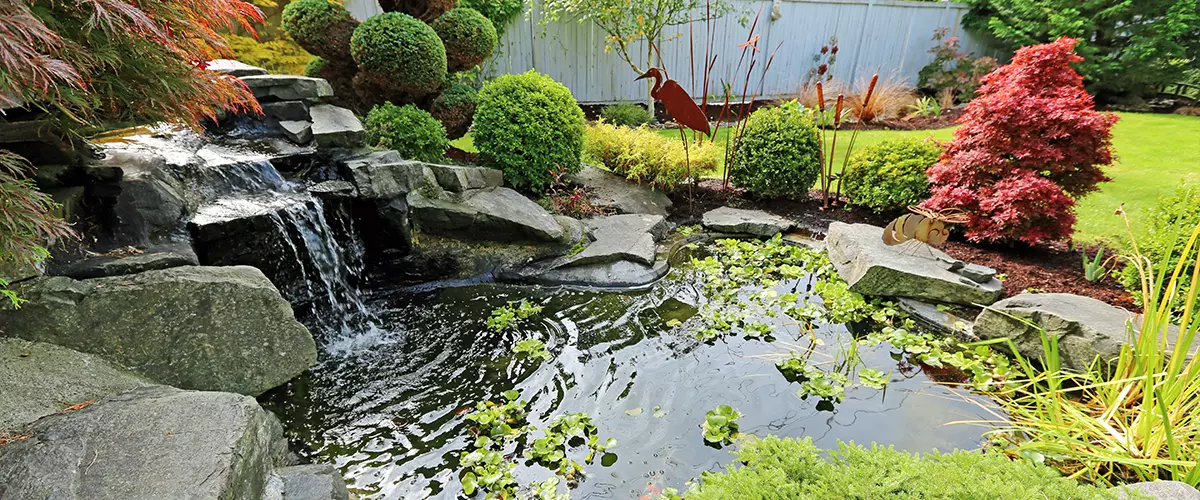Key Mistakes To Avoid When Building A Backyard Pond
Building a backyard pond can be an exciting project, but it’s easy to make mistakes that can affect the final outcome. Many common errors, from poor site selection to inadequate filtration, can ruin your efforts if you’re not careful.
In this guide, we’ll highlight the key mistakes to avoid, helping you create a thriving and beautiful water feature in your outdoor space.

Common Mistakes in Pond Location and Planning
Choosing a low-lying or runoff-prone area
Putting your pond in a low spot might seem like a good idea at first. This spot fills up easily with rain, right? But this choice has big problems. Runoff from higher ground can bring pesticides, fertilizer, and dirt into your pond.
This messes up the water quality fast.
Next issue: ponds in these spots might flood after heavy rain. Floods can wash away plants and small creatures living there. Keep an eye on the land’s slope around where you plan to put the pond.
Think about how water moves during storms. This helps keep your home safe for fish and plants.
Ignoring sunlight and shade requirements
After picking the right spot away from low areas, it’s vital to consider sunlight and shade. You need some sun to help the pond plants grow. Yet, too much can cause algae problems. A balanced spot with both light and shadow works best for a healthy pond.
This keeps the water clear and the fish happy.
Picking the right balance is tricky but crucial. For example, koi ponds do well with about 4-6 hours of sunlight each day. Without enough light, plants won’t thrive, making the pond look dull and lifeless.
Too much sun heats the water too much, stressing fish and boosting algae growth. Exploring options in this area helps create a vibrant color display in your backyard oasis.

Size and Depth Considerations
Underestimating the size and depth needed for wildlife
Making a pond too small or shallow can be bad for fish and plants. A deeper pond gives wildlife a better place to live and helps keep the water clean. For healthy fish, such as koi, ponds should be at least 3 feet deep.
This depth keeps the water temperature stable and protects fish from predators.
A bigger pond creates a more natural environment for wildlife.
Material and Filtration Missteps
Inadequate filtration systems
In backyard pond construction, inadequate filtration systems can lead to water quality issues. These problems include algae blooms, debris buildup, and poor oxygen levels, which can harm the pond’s ecosystem.
Insufficient filtration also affects the overall balance of nutrients and microorganisms crucial for a healthy aquatic environment. Choosing the right filtration system based on factors like pond size and wildlife is essential for maintaining clear and clean water.
When considering pond construction, ensuring an adequate filtration system will significantly impact the results by maintaining a healthy pond ecosystem in the long run.
Using improper materials for lining and structure
When building a backyard pond, the choice of suitable materials for lining and structure is vital. Using inferior or incorrect materials can lead to leaks, structural instability, and harm to the ecosystem.
It’s crucial to select high-quality liners that are durable and resistant to punctures. Moreover, choosing appropriate rocks and stones for the pond’s structure is crucial for both visual appeal and ensuring stability and longevity.
Incorporating unsuitable materials, such as low-grade liners or unstable rocks, can lead to expensive repairs and maintenance in the future. By prioritizing quality materials during construction, you can establish a sustainable and visually appealing pond that elevates your outdoor space while providing a secure habitat for wildlife.

mistakes to avoid when building a backyard pond - FAQs
Common errors include poor planning, improper site selection, and inadequate depth.
To avoid key blunders during the process, research thoroughly beforehand to gather ideas on proper techniques and materials needed.
Yes, poor or ill-thought-out ideas can lead to major issues such as leaks and structural instability.
Yes, plenty of online guides provide step-by-step instructions and helpful tips on avoiding crucial errors while implementing your ideas for a successful backyard pond construction.
Conclusion
To ensure your backyard pond is a long-lasting success, it’s important to focus on proper planning, from selecting the right location to using the best materials and filtration systems.
Avoiding these common mistakes will help you create a pond that not only looks beautiful but also supports a healthy ecosystem for wildlife.
Ready to build your dream pond? Contact Site Pros Landscaping today and let our team guide you through the process for a flawless, worry-free installation! (407) 480-0713
